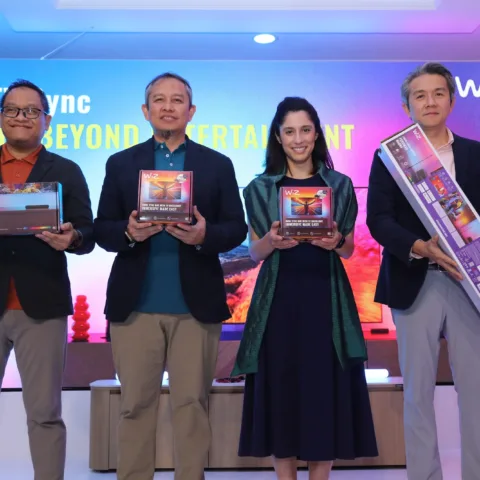The movie and cinema have been around for at least 100 years already, and by principle it remains largely unchanged. A camera records sequential images upon a medium, which is then duplicated, and spread to locations with projectors and screens. The sequence of images is projected onto a screen. The technology has definitely progressed light years from those old hand-operated cameras. The medium is in a major shift from celluloid to digital and the ‘locations’ are now highly-specialized buildings, with comfortable seating, optimized screens, and powerful cinema projectors. But the essence remains the same.
The arrival of broadcast television did not turn the movie industry upside down – the moving picture industry expanded into highly specialized fields in moviemaking and TV production (among others). Although the TV is probably one of the 20th century’s most recognizable – and most ubiquitous – feature, it never supplanted the cinema as a form of audiovisual entertainment – if ever, TV became a marketing tool to get people in cinemas on a movie opening day. And of course, TV airings of the same movie far after the cinema release enabled residual income and thus adding to the movie producer’s income.
The movie industry has always had a high barrier for entry – producing a small movie will still take more than a few people to work on, as compared to a garage band – not to mention the difficulty and cost in duplicating a finished movie, and finding a distributor or cinema willing to screen it.
Various stages of movie-making cost money, and even when you manage to do it on a manageable budget, the issue of duplication and distribution comes in. Creating copies of celluloid costs a LOT of money, and even making digital copies of said movie that would be compatible with the digital projectors (especially the picture resolution) would cost some cash.
On the cinema side, it’s not easy to build a cinema. A cinema is usually an anchor tenant at any mall (one of the first tenants to confirm setting up at a mall and is used to entice other potential tenants), and building cinemas to the standard what most consumers are used to today cost a pretty penny.
The projectors, screens and sound system cost tens of thousands of dollars, not to mention the seating, interior design and ancillary facilities for selling food & beverages or other services. Movie tickets may be main product that cinemas sell, but the margins are low, hence the higher prices for food & beverages. But still, investing in a cinema (or a chain of cinemas) is only for those who can invest long term.
This is why online video platforms are important – since the basic movie production tools are now cheaper and easier to use, a platform that takes advantage of the new generation of moviemakers needs to go beyond the 100-year strong tradition of moviegoing to find and deliver to audiences.
YouTube and Viki would be two sides of the same sword, while sites like Spuul give entire catalogues of movies a new platform to be rediscovered. Now that online video has become mainstream, with online video capability being touted on the more recent TV sets, this paves the road towards premium online video services, or even pay-per-view ‘viewing parties’ where a movie is distributed online and played simultaneously around the world (or even with staggered hourly shows, if need be) at assigned locations, where the audience pays tickets to see the show. Just like at the cinema.
3D and digital movies today already have a DRM key that only plays the movie on the projector at assigned movie times, so with good internet bandwidth, would cinemas stream movies directly from studios instead of having to send HDDs accross the globe? Time will tell.
 Ario is a co-founder of Ohd.io, an Indonesian music streaming service. He worked in the digital music industry in Indonesia from 2003 to 2010, and recently worked in the movie and TV industry in Vietnam. Keep up with him on Twitter at @barijoe or his blog onhttp://barijoe.wordpress.com.
Ario is a co-founder of Ohd.io, an Indonesian music streaming service. He worked in the digital music industry in Indonesia from 2003 to 2010, and recently worked in the movie and TV industry in Vietnam. Keep up with him on Twitter at @barijoe or his blog onhttp://barijoe.wordpress.com.
[Image from Flickr/m4tik]











